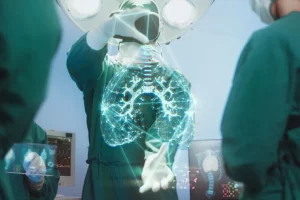How Telehealth Has Revolutionized the Healthcare Industry
Telemedicine has revolutionized the healthcare industry by increasing efficiency and access to medical care. You don’t have to overcome geographical barriers or travel long distances to access health care. Instead, telemedicine has made it easier to access clinical support and improved patient outcomes. Through AI-enabled devices that facilitate continuous connectivity, physicians can partner with patients to achieve their therapeutic goals. You might be wondering how does artificial intelligence work and how it impacts the healthcare industry. It helps healthcare professionals to reduce burnout and attend to more patients within a shorter period. Telemedicine has revolutionized the delivery of healthcare by enabling doctors to meet customer demand and improve the delivery of care. Here are four ways telemedicine technologies such as video conferencing has transformed the healthcare landscape.
Reduced Costs
Telemedicine plays an integral role in containing health care costs. For example, the use of hospice and in-home care among the elderly has reduced health care costs significantly. Today’s aging population can access medical care at an affordable price. The aging population will rise and reach 20% of the US population by 2030. As such, financial challenges will increase as the ratio of retirees to individuals paying taxes diminishes. However, telemedicine will help the aging population to access health care at lower costs and with top-notch convenience.
Increased Efficiency and Accessibility
Telemedicine enables physicians to consult and provide healthcare records and services from anywhere. In short, telemedicine has allowed healthcare professionals to overcome geographical barriers in remote areas where people travel miles to access medical care. Moreover, telemedicine has made it easier to monitor patients with chronic conditions such as cancer and heart diseases as well as those who need to be followed up after discharge. Parents with children under 18 years also place a high value on the efficiency and accessibility of telemedicine. It’s not surprising considering the schedule of parents who work full-time. It can be challenging to visit a doctor and have a suspicious mole examined when you have a tight schedule. Such parents have to take kids to school, go to work, and take care of them at home. All of these factors increase the efficiency of the caregivers and patients.
Reduced Burnout
Doctors often have little time to relax or see their families. Long hours usually take a toll on the health of caregivers. That makes them feel as if they’re processing their patients instead of caring for them. However, you can reverse the effects of burnout by shifting to telemedicine technologies. Telehealth helps eliminate horrible commute and have more time with your family. It empowers doctors by enabling them to take care of their patients without traveling long distances. The appreciation that caregivers get from their patients motivates them to work even harder. Telehealth enables clinicians to attend to more patients than they would with traditional care models. That way, many caregivers have increased their revenue streams. In fact, video conferencing is far less expensive than traveling miles to meet a patient face-to-face. In short, telemedicine is a win-win for both caregivers and patients. It continues to gain ground and will define the future of the healthcare industry. Soon, video conferencing will become the only way to visit caregivers.
Improved Patient Outcomes
Over time, more and more patients want to visit their caregivers via video streaming. Videoconferencing technologies have eliminated delays that would make it difficult to access healthcare. Office consultation might be costly and may take longer to see a doctor. As such, patients have turned to video visits as they are convenient and less expensive. Patients prefer the immediacy and low costs that come with telehealth technologies. Telemedicine facilitates more informal and face-to-face consultations. It increases access to care and enables caregivers and patients to work together to reach their health objectives. It is easier for a patient to connect with a healthcare professional via video. That way, it’s easier to get the care you need to improve your health outcomes.


















